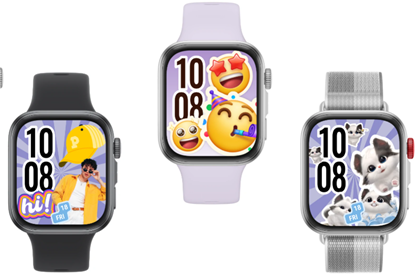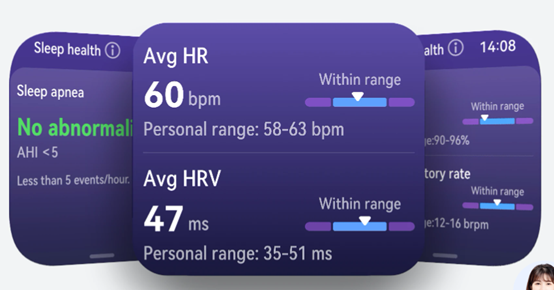Heartbeats tell a deeper story than just pulse counts. While your heart rate shows how fast your heart beats, Heart Rate Variability (HRV) reveals how well your body adapts to life's challenges. Imagine two people with identical 60 BPM heart rates: one might be perfectly healthy with a variable rhythm between beats, while the other could show concerning rigidity. This subtle difference makes HRV one of the most insightful biomarkers for overall wellness. In this article, we'll explore why health enthusiasts and athletes alike consider HRV monitoring indispensable for optimizing performance, preventing burnout, and maintaining long-term wellbeing.

The Science Behind HRV: Your Body's Stress Barometer
HRV measures the millisecond variations between consecutive heartbeats, controlled by your autonomic nervous system's constant tug-of-war. When stressed (sympathetic dominance), your heart beats more uniformly, lowering HRV. When relaxed (parasympathetic activity), natural variability increases. This biological feedback system explains why morning HRV readings often predict your day's potential energy levels. For instance, a night of poor sleep typically shows as reduced morning HRV, while consistent meditation practice gradually improves it. Advanced algorithms now analyze these patterns to provide personalized health insights far beyond what simple heart rate data offers. The true power of HRV lies in its ability to reveal invisible stressors - whether physical, emotional, or environmental - before they manifest as noticeable symptoms.
Top Reasons HRV is Essential for Health Optimization
Early Warning System for Stress and Overtraining
Your HRV score often drops before you consciously feel exhausted, making it an exceptional early warning tool. Consider a busy parent juggling work and family responsibilities: their wearable might detect declining HRV trends before they notice mounting fatigue, signaling the need for rest. Athletes particularly benefit from this predictive quality - a week of progressively lower HRV readings could prevent overtraining injuries by suggesting deload weeks before performance declines. Some advanced systems even detect illness precursors, like when HRV dips unusually low before cold symptoms appear. By treating HRV as your body's dashboard warning light, you can proactively adjust sleep, nutrition, or workload to avoid burnout.
Personalized Fitness & Recovery Insights
HRV transforms generic workout plans into truly personalized regimens. Traditional training programs assume everyone recovers at the same rate, but HRV reveals your unique recovery capacity. For example, two cyclists following identical training might show completely different HRV responses - one ready for intense intervals, the other needing active recovery. Smart training apps now auto-adjust workout intensity based on daily HRV readings. Even non-athletes gain insights: someone starting a walking routine can see how their body adapts over weeks through improving HRV trends. This biological feedback helps distinguish between productive training stress and harmful overexertion, making fitness progress safer and more efficient.
Mental Health & Emotional Well-being Indicator
The mind-body connection becomes measurable through HRV fluctuations. Studies show people with anxiety disorders typically exhibit lower baseline HRV, while mindfulness practices can improve it. A college student might notice their HRV drops during exam weeks but rebounds after yoga sessions. Some therapists now incorporate HRV biofeedback to help patients develop emotional regulation skills - watching real-time HRV changes during breathing exercises creates tangible proof of relaxation techniques working. Beyond clinical applications, tracking HRV responses to different social situations, work environments, or even news consumption can help design a lifestyle that supports mental resilience.
How to Track HRV Like a Pro
Effective HRV monitoring requires consistency and context. Morning readings taken immediately upon waking provide the cleanest baseline, ideally using wearable devices that capture overnight trends. Look for solutions that measure HRV through photoplethysmography (PPG) or electrocardiography (ECG) with clinical-grade accuracy. Advanced systems compare your daily scores against personalized baselines rather than generic population averages - after all, a "good" HRV varies significantly by age, genetics, and fitness level. The most insightful tracking combines quantitative data with lifestyle logging (sleep, alcohol, stress events) to identify patterns. For example, you might discover your HRV consistently drops 15% after late dinners, prompting earlier meal times. While standalone HRV apps exist, integration with comprehensive health platforms yields richer insights by correlating HRV with activity, sleep, and nutrition data.

Common HRV Myths & Mistakes to Avoid
Why a "Higher HRV" Isn't Always Better
The "higher is better" HRV mentality overlooks crucial nuances. While generally true that increased HRV indicates better adaptability, artificially inflated readings can signal problems. Overtrained athletes sometimes show paradoxically high HRV as their exhausted nervous systems struggle to regulate properly. Certain medications like beta-blockers may increase HRV without reflecting improved health. Context matters tremendously - a temporarily lowered HRV after an intense but productive workout differs concerningly from chronic low HRV due to unmanaged stress. The most valuable HRV analysis considers trends over weeks/months rather than obsessing over daily numbers. Your personal baseline range matters more than comparing to others' scores.
Overanalyzing Daily Fluctuations
HRV naturally varies day-to-day, and interpreting single data points often leads to false conclusions. A common mistake involves changing workout plans based on one low HRV morning, when it might simply reflect poor sleep from neighborhood noise. Savvy users watch multi-day trends instead - three consecutive declining readings warrant attention, whereas isolated dips may self-correct. Seasonal changes also affect HRV, with many people showing lower winter baselines. The most effective approach treats HRV as one piece of your health puzzle, considered alongside energy levels, sleep quality, and overall wellbeing. Some advanced platforms now use machine learning to distinguish meaningful HRV changes from normal variability, reducing analysis paralysis.
Conclusion
HRV monitoring represents a paradigm shift from reactive to proactive health management. For those seeking comprehensive tracking, the huawei watch Fit 4 offers all-new HRV indicators that compare daily readings against your personal baseline, alerting you to meaningful changes from stress, illness, or lifestyle factors. Unlike generic health metrics, HRV provides personalized insights that evolve with your body's needs, making it invaluable for everyone from office workers to elite athletes. By understanding your unique HRV patterns, you gain an evidence-based approach to balancing stress, recovery, and performance in daily life. This powerful biomarker transforms guesswork into informed decisions for sustainable wellbeing.
